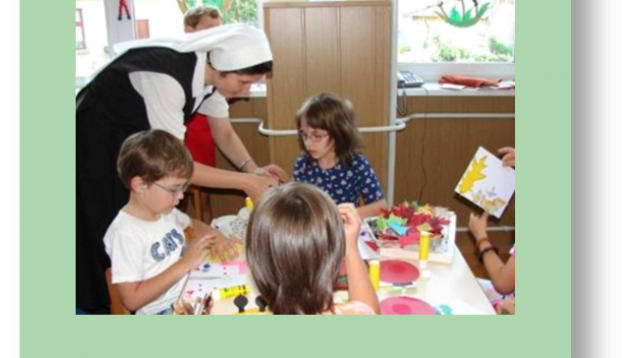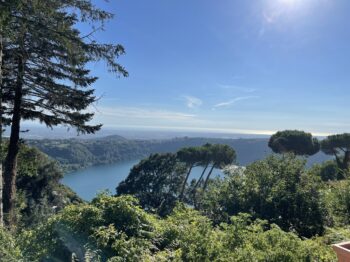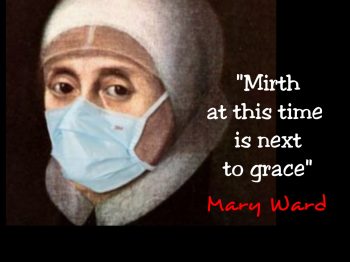 From time immemorial women wanted to be beautiful in order to be loved or to have power, but until the last century they had no right to express their inner beauty through art. That was an area reserved for men. Mary Ward was beautiful according to the description in her biography, but not only in a physical way: noble, educated, a practising Catholic, gifted with compassion, committed and courageous in defending Catholicism in a country where it was persecuted; always seeking the essential, she remained cheerful, friendly, attentive, full of concern for all those around her and for her work. In everything she did she poured forth her inner beauty and she did so specially through the art of educating.
From time immemorial women wanted to be beautiful in order to be loved or to have power, but until the last century they had no right to express their inner beauty through art. That was an area reserved for men. Mary Ward was beautiful according to the description in her biography, but not only in a physical way: noble, educated, a practising Catholic, gifted with compassion, committed and courageous in defending Catholicism in a country where it was persecuted; always seeking the essential, she remained cheerful, friendly, attentive, full of concern for all those around her and for her work. In everything she did she poured forth her inner beauty and she did so specially through the art of educating.
In the schools she established, the curriculum for girls (from amongst the poorest families, those at risk or from vulnerable groups as we would say today) included, in addition
to intellectual and practical courses, training in the arts: music, drawing, drama. Well educated girls of that time needed to know how to manage a household, how to cook and sew, to be a good conversationalist and above all to play the piano in order to create a good ambience at different society gatherings. But drama, painting, poetry and literature – all these were for men with their “rational” nature and who could therefore think, not for women who were very “emotional” and could not ascend to the heights of thought and expression through art. If they did take the risk of doing so they used a pseudonym. Mary Ward, however, wanted this for her pupils and the first companions fought for it.
Although apparently just a small detail in the school curriculum it actually became the seed of a revolution for changing the image of women in society. Women are not ornaments to be judged for their physical beauty, a good acquisition to be shown off in society, someone with the right vital statistics who is well adorned, but rather intelligent persons with a spirit ennobled through education, capable of what is good, truth and beauty which they express in her daily life, in relationships and in work but also in art. Furthermore, art is a way of contemplating God’s creation and of turning it into action: singing, movement, reflection, communication, and communion. A woman liberated from the set patterns of time can express herself freely, in all her beauty, becoming a reference point and an inspiration to those around her, those to whom she has been entrusted through her vocation… in the family, in society, and in the Church through her consecration.
A woman who has been formed as a whole person – mind, body and soul – will know how to see herself in the light of the Creator in all her beauty. She will know how to see the whole of creation in His light and then express herself through the arts, in particular through the art of educating, i.e. the art which includes all the others.
Have I realised my inner beauty in the light of the Creator?
Do I enable others to find their own inner beauty and support them in their transformation?
Daniela Mare CJ – Romanian Province









